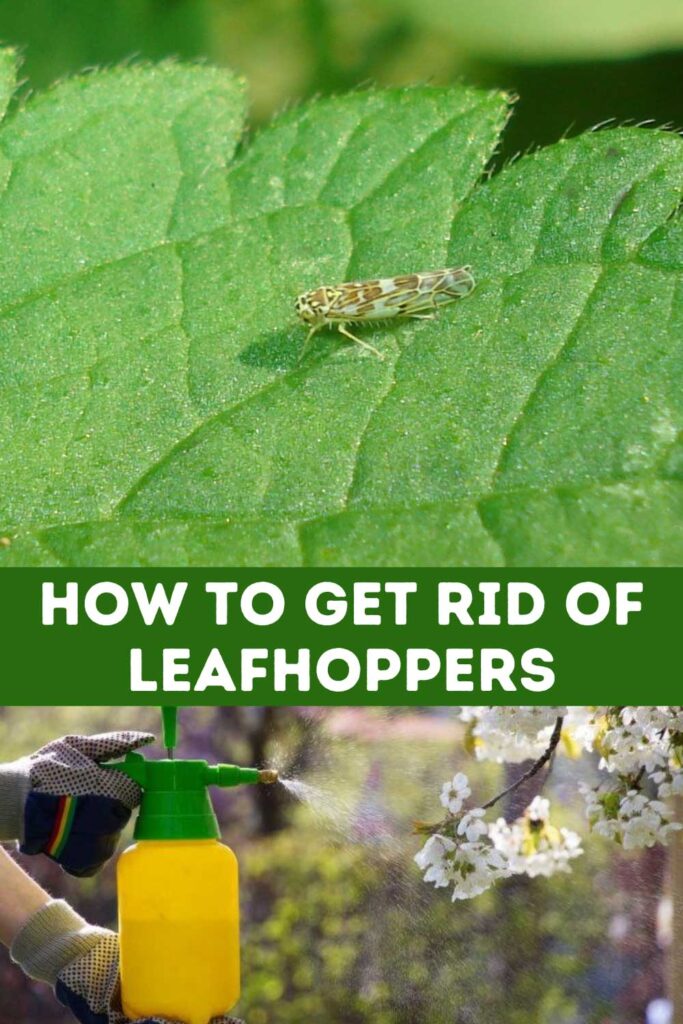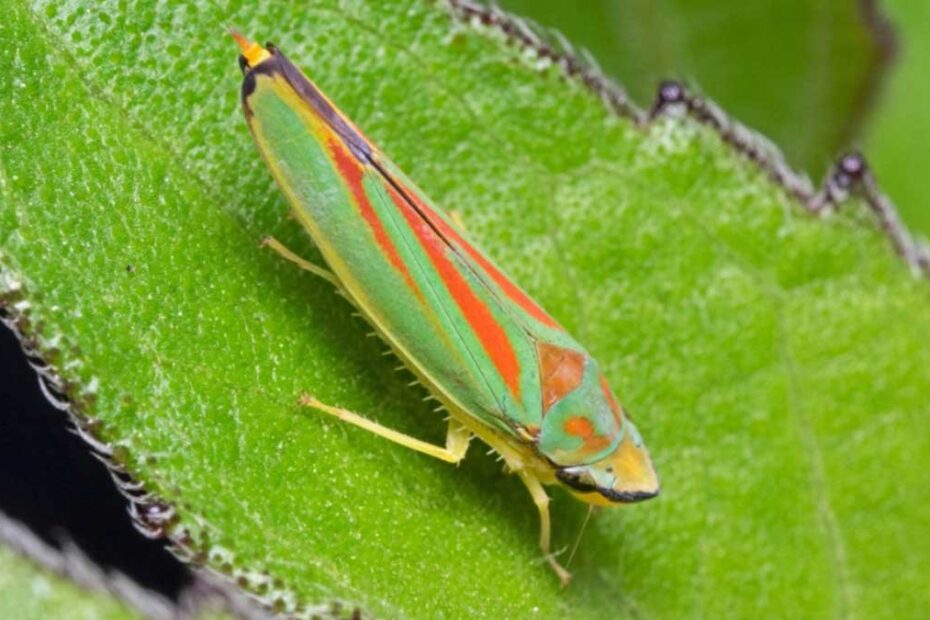Leafhoppers might be tiny, but they can wreak havoc on your garden if left unchecked. These agile pests feed on plant sap, causing leaves to curl, yellow, and even stunt growth. If you’ve noticed these symptoms, it’s time to take action before they spread further.
Understanding how to get rid of leafhoppers effectively can save your plants and ensure a thriving garden. From natural remedies to chemical solutions, there are various strategies to tackle these pests. In this guide, you’ll learn the most effective methods to keep leafhoppers at bay and protect your green space.
Key Takeaways
- Identify Leafhoppers: Leafhoppers are sap-sucking insects that cause yellowing and curling of leaves. Detecting early signs like white spots and sticky residue is crucial for effective management.
- Preventative Measures: Implement strategies such as choosing resistant plant varieties, practicing crop rotation, and encouraging natural predators to reduce leafhopper populations.
- Organic Solutions: Use neem oil spray, soap and water solution, and diatomaceous earth to manage leafhoppers organically without harming beneficial insects.
- Chemical Treatments: Apply insecticidal soaps and systemic insecticides for severe infestations. Always follow label instructions and consider the impact on beneficial insects.
- Regular Monitoring: Inspect your garden weekly for early signs of infestation and take timely action. Focus on leaf undersides and new growth, and adapt seasonal maintenance practices to keep your garden healthy.

Understanding Leafhoppers
Leafhoppers can quickly become a garden nuisance. Let’s jump into what they are and how to identify their presence.
What Are Leafhoppers?
Leafhoppers are small, sap-sucking insects belonging to the Cicadellidae family. They measure between 0.12 and 0.4 inches in length and vary in color, including green, yellow, and brown.
Key Characteristics:
- Size: 0.12 to 0.4 inches
- Colors: Green, yellow, brown
- Wings: Membranous, often held roof-like over the body
- Movement: Jump or hop when disturbed
Common Signs of Leafhopper Infestation
Detecting leafhoppers early helps in managing their population. Look out for these indicators:
Visual Damage:
- Yellowing Leaves: Chlorosis caused by sap extraction
- Curled Leaves: Deformation resulting from feeding
- White Spots: Known as ‘hopperburn,’ indicating feeding sites
- Sticky Residue: Honeydew secretion attracting sooty mold
- Presence of Nymphs: Wingless young leafhoppers on the underside of leaves
- Adult Activity: Quick movements or hopping when plants are disturbed
Effective detection and identification of leafhoppers are crucial in protecting your garden from significant damage.
Preventative Measures
Preventing leafhoppers starts before the first sign of infestation. By implementing several strategic actions, you can reduce the likelihood of these pests damaging your garden.
Choosing Plants Wisely
Choosing the right plants can minimize leafhopper attraction.
- Resistant Varieties: Opt for plants known to be resistant to leafhoppers, such as marigolds and zinnias.
- Diverse Planting: Mix different plant species to avoid large monocultures, which tend to attract pests.
- Healthy Plants: Healthy plants can better resist infestations, so ensure plants receive adequate water and nutrients.
Implementing Crop Rotation
Rotating crops can disrupt leafhopper breeding cycles.
- Rotation Patterns: Change the location of your crops each growing season. For example, avoid planting nightshades or legumes in the same spot each year.
- Cover Crops: Use cover crops like clover or rye during off-seasons to improve soil health and disrupt leafhopper habitat.
Enhancing Natural Predators
Encouraging natural predators provides a biological control.
- Beneficial Insects: Introduce insects like ladybugs, lacewings, and spiders that naturally prey on leafhoppers.
- Habitat Creation: Plant herbs and flowers like dill, fennel, and cosmos to attract these beneficial insects.
- Avoid Pesticides: Minimize pesticide use, which can harm beneficial predators.
Preventative measures are key in managing leafhopper populations. By choosing plants wisely, implementing crop rotation, and enhancing natural predators, you create an environment less hospitable to these pests.
Organic Solutions
When dealing with leafhoppers, organic solutions offer an environmentally friendly approach. These methods avoid harsh chemicals, making them safer for both your plants and beneficial insects.
Neem Oil Spray
Neem oil acts as a natural pesticide, disrupting the life cycle of leafhoppers. Derived from the seeds of the neem tree, it’s effective yet safe for plants.
How to Use Neem Oil:
- Mix Solution: Combine 1-2 tablespoons of neem oil with 1 gallon of water.
- Add Soap: Incorporate a few drops of dish soap to help the mixture adhere to leaves.
- Spray Plants: Apply the mixture directly to affected plants, focusing on the undersides of leaves where leafhoppers often hide.
- Frequency: Repeat every 7-14 days to maintain effectiveness.
Soap and Water Solution
A soap and water solution can suffocate and kill leafhoppers upon contact. This method is simple and uses household items.
Preparation and Application:
- Mix Ingredients: Combine 1-2 teaspoons of mild liquid soap with 1 quart of water.
- Apply Solution: Spray the mixture generously on infested plants, ensuring you cover the underside of leaves.
- Timing: Use in the early morning or late evening to prevent leaf burn and repeated weekly to keep populations down.
Diatomaceous Earth
Diatomaceous earth (DE) is a natural substance made from fossilized algae. Its sharp particles damage the exoskeletons of leafhoppers, causing dehydration.
- Dry Application: Dust a thin layer of DE onto the soil and plant surfaces, paying close attention to new growth.
- Reapply After Rain: Since DE can wash away, reapply after rainfall or heavy watering.
- Safety Precautions: Wear a mask and gloves to avoid inhalation and skin irritation while applying.
Ensure to alternate these methods for the best results. This combination can significantly reduce leafhopper populations in your garden organically.
Chemical Treatments
Chemical treatments can effectively manage severe leafhopper infestations. These methods provide quick and reliable solutions when natural and preventative approaches fall short.
Insecticidal Soaps
Insecticidal soaps target leafhoppers by breaking down their outer shells, causing dehydration.
- Application: Mix insecticidal soap according to the label instructions. Spray directly onto leafhoppers and affected plants, focusing on the undersides of leaves where leafhoppers often reside.
- Frequency: Apply every 5-7 days until populations decline. Consistent application ensures effectiveness.
- Safety: Generally safe for humans and pets, but avoid spraying on windy days to prevent drift.
Systemic Insecticides
Systemic insecticides get absorbed by plants, offering internal protection against leafhoppers.
- Application: Apply systemic insecticide to the soil or base of the plants. The roots absorb the chemical, which then travels through the plant’s vascular system, killing leafhoppers that feed on the sap.
- Duration: One application can protect plants for several weeks or even months, depending on the product’s specific duration.
- Considerations: Use systemic insecticides as a last resort since they can affect beneficial insects. Always follow the product label for specific guidelines.
When utilizing chemical treatments, alternate between different strategies to reduce the likelihood of leafhopper resistance.
Monitoring and Maintenance
Monitoring and maintaining your garden play a crucial role in managing leafhopper populations. By regularly inspecting your plants and performing seasonal maintenance, you can identify early signs of infestation and take appropriate action to protect your garden.
Regular Inspection
Consistently check your plants to detect and control leafhopper infestations early.
- Frequency: Inspect plants weekly during the growing season.
- Prime Spots: Focus on leaf undersides and new growth, where leafhoppers often hide.
- Signs: Look for yellowing and curling leaves, white speckling, and sticky residue.
- Early Detection: Catching infestations early helps in applying effective treatments promptly.
Seasonal Maintenance Tips
Performing maintenance tasks based on the season can keep leafhopper populations in check.
- Spring:
- Check for Nymphs: Inspect young plants for nymphs and remove them manually.
- Plant Selection: Introduce resistant plant varieties like marigolds and zinnias.
- Soil Health: Use compost and organic matter to maintain plant health and vigor.
- Summer:
- Watering: Ensure adequate watering to prevent plant stress, as stressed plants attract more pests.
- Beneficial Insects: Introduce or support natural predators such as ladybugs and lacewings.
- Neem Oil Applications: Use neem oil periodically to disrupt leafhopper life cycles.
- Fall:
- Remove Debris: Clear garden debris that can harbor overwintering leafhoppers.
- Cover Crops: Plant cover crops to enrich the soil and disrupt pest cycles.
- Inspect for Adults: Look for adult leafhoppers and treat promptly if found.
By incorporating these monitoring and maintenance practices, you can effectively manage leafhopper populations and protect your garden from significant damage.
Conclusion
Taking proactive steps to manage leafhoppers is crucial for maintaining a healthy garden. By implementing preventative measures and utilizing both natural and chemical solutions, you can effectively control these pests and protect your plants. Regular monitoring and maintenance will help you detect early signs of infestation, allowing you to take quick action. With these strategies in place, your garden can thrive, free from the damaging effects of leafhoppers.
Frequently Asked Questions
What are leafhoppers?
Leafhoppers are small, sap-sucking insects from the Cicadellidae family. They range from 0.12 to 0.4 inches in length and come in colors like green, yellow, and brown. They are known for their membranous wings and jumping movement.
How do leafhoppers damage plants?
Leafhoppers feed on plant sap, causing symptoms such as curled and yellow leaves, stunted growth, and white spots on leaves. They can also leave behind sticky honeydew residue.
How can I detect a leafhopper infestation?
Common signs of leafhopper infestation include yellowing and curled leaves, white spots from feeding, sticky honeydew residue, and the presence of nymphs on the underside of leaves.
What are some natural remedies for controlling leafhoppers?
Natural remedies include neem oil spray, soap and water solution, and diatomaceous earth (DE). These methods can help disrupt the leafhopper life cycle and reduce their population.
Can I use chemical treatments to manage leafhoppers?
Yes, chemical treatments such as insecticidal soaps and systemic insecticides can be used for severe infestations. However, it’s advisable to use these as a last resort due to their potential impact on beneficial insects.
What preventative measures can I take to avoid leafhopper infestations?
Preventative measures include choosing resistant plant varieties, practicing diverse planting, ensuring plant health through proper care, implementing crop rotation, and introducing beneficial insects to the garden.
Why is it important to monitor my garden for leafhoppers?
Regular monitoring helps detect early signs of infestation, allowing for timely interventions. This helps protect plants from significant damage and maintain a healthy garden.
How can I maintain my garden to prevent leafhopper infestations?
Maintain your garden by inspecting plants regularly, especially the undersides of leaves. Seasonal tips include checking for nymphs in spring, adequate watering in summer, and removing debris in fall to prevent overwintering.
